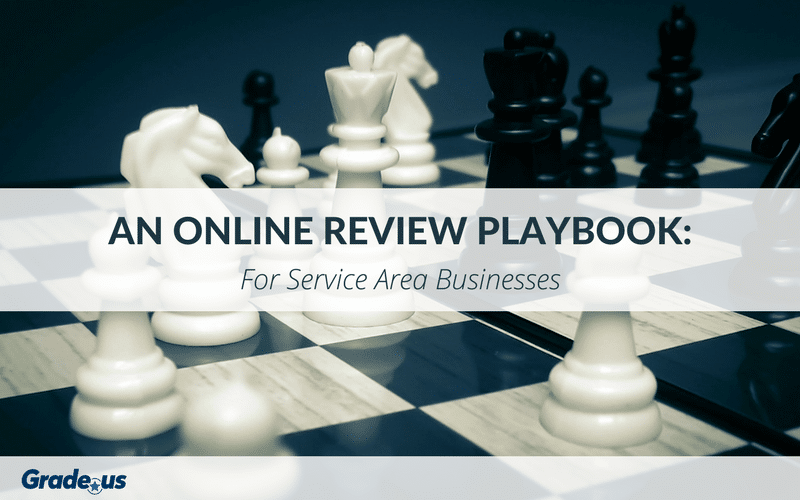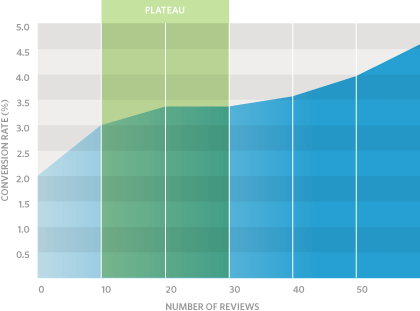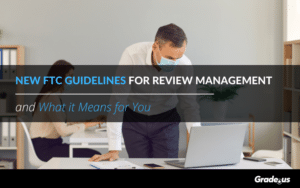What do other service area businesses have that you don't?
It seems some of them have an easy time getting reviews. These businesses have hundreds, sometimes thousands of five star reviews. Their customers write incredible reviews - the kind that generate leads, attract customers and create sales.
Most service businesses struggle.
But these businesses, these anomalies, they seem to do things differently. Even more amazing, they're able to attract a massive amount of reviews. While their competitors have 5, 10 or 50 reviews they have 500, 1,000, and even 5,000 positive reviews.
What's their secret?
How legendary service area businesses attract amazing reviews
Legendary service area businesses make things easier, for their customers and themselves. Believe it or not, this is why most service businesses struggle.
How do they make things easier for themselves?
They create a plan for reviews. Sounds counterintuitive, but it's true. They take the time, upfront, to create a plan that's (a.) easy for their entire team to understand (b.) simple enough for their team (and customers) to follow and (c.) simple to measure and improve.
Seriously though, who cares?
It's not like every business can accomplish the same results. Businesses are able to get customers even if they don't have a lot of reviews. What measurable difference does a large portfolio of reviews make?
Good question.
Let's do some digging through the data to find our answer. The Local Consumer Review Survey found:
- 97 percent of consumers read online reviews for local businesses
- 87 percent of consumers won’t even consider businesses with low ratings
- 49 percent of consumers need at least a four star rating before they choose to use a business
- 73 percent of consumers form an opinion about your business by reading an average of seven reviews
- Responding to reviews is more important than ever. 30 percent of consumers feel this is key to judging a local business
The consequences of neglecting online reviews is enormous. But it's also easy to ignore. When you lose a customer to an online review nothing obvious happens.
There are less calls, yes.
But the only obvious indication that it's destroying your business is a decrease of some kind. Less leads, lost sales, declining interested based in part on historical data. It isn't always easy to identify lost growth opportunities though.
What exactly are you losing to negative/low reviews?
Go Fish Digital decided to conduct a research survey to find out. In their study, they found negative reviews had a cascading effect on lead generation, customer acquisition and sales.
- 1 negative review: You’re likely to lose 22 percent of potential customers
- 3 negative reviews: You’re likely to lose 59.2 percent of potential customers
- 4 negative reviews: You’re likely to lose 70 percent of your potential customers
At this point I think it's important to add some context.
Let's say you're a company with 500 positive reviews. You have four negative reviews. Does this mean you'll lose 70 percent of potential customers coming in?
Probably not.
The issues we're dealing with then, are ratios.
So what's a good ratio?
Research conducted by Emily Heaphy and Marcial Losada, found the ideal praise-to-criticism ratio is 5 to 1. Five positive interactions for every one negative interaction.

Heaphy and Losada studied the impact this ratio has on teams inside a company. Here's where it gets interesting. They found this applied to customer interactions as well.
That's right.
At least five positive reviews for every negative review. Here's why that's important. Trust, specifically trustworthiness, is an expression of consistency and reliability over time. Your positive reviews are a written record of your consistency and reliability.
What about your negative reviews?
They serve a purpose too. Negative reviews remind you that there's work to be done. It protects you from complacency and comfort. Negative reviews (hopefully) provide you with the motivation to continually grow.
Start Attracting Amazing Reviews
Your business doesn't have to struggle, in fact it won't - if you have the right playbook. You can create a legendary business, one positive review at a time.
Growth isn't predictable if it's not built on...
Habits.
Habits give you the momentum you need to generate consistent results, day after day. But habits need to be created and trained into an organization.
How?
With a plan. With the right playbook you can use online reviews to grow your business quickly.
Wait a minute.
Why would you need a playbook for online reviews? Aren't online reviews as simple as asking customers to write a review and responding to negative reviews?
Absolutely not.
Reviewers aren't created equal. Reviews from bad customers tend to attract more bad customers. Extreme discount shoppers tend to bring their penny pinching friends. What's worse, because there isn't a relationship established with these customer archetypes, any reviews you receive are likely to be harsh and unforgiving.
Legendary service businesses treat their review portfolio like a garden. Something that's cultivated carefully.
Why?
Because the quality (and quantity) of your reviews correlates strongly with your conversion rate. The more reviews you acquire, the better your conversion rate.
This is where a good online review playbook comes in.
With a review playbook you can...
1. Identify the strategies and tactics you'll need to attract high quality reviews
2. Choose the right time to request a review
3. Prioritize, plan and prepare for any customer responses, positive or negative
4. Simplify the process for your team and your customers
5. Create easy-to-follow habits that make growth automatic
A good plan gives you the ability to teach others. It gives you the instruction you'll need to turn your plan into a habit. More importantly, it gives you quality assurance.
So where do you start?
Step 1: Identify your ideal reviewer
Imagine you have two customers.
1. Customer A requests a proposal or quote. They haggle on the price, pitting you against every other company they've requested bids from in an effort to drive your price down. You eventually come out on top but the margins for this customer is slim. You're breaking even or barely making a profit.
2. Customer B has been following your company for some time. They're regular readers/commenters on your blog. They're following you on social media. They're drawn to your business and they're engaged. They decide to hire you. While price is a concern they focus their attention on value and the results you'll achieve together. Your profit margins are 60 percent higher. This customer trusts you completely and is easy to work with.
Which customer would you prefer?
If you're like most people, you prefer Customer B. It's a no brainer, right? They trust you, you make more money and they're easy to work with.
Here's the problem.
When it comes to requesting reviews, businesses don't make that distinction. They pursue both customers equally. At first glance this sounds like the right thing to do. Wait, am I saying you should only accept reviews from "customer Bs?"
Not at all.
You'll get a fair amount of reviews from "customer As" at first. That's normal and it's okay. If they're gracious enough to share their feedback with you, positive or negative, thank them for it.
At some point you'll need to make a choice.
If you want to attract conversion boosting reviews from all-star customers you'll need to make a choice. You'll need to focus your time and attention on the types of customers you invite into your business. You'll need to focus on attracting ideal customers.
Who specifically is an ideal customer?
They're the customers you'd fight to keep, the ones that produce 80 percent of the results you want. Do you know how to find them? Most service businesses don't.
Here's how you do it.
Identify customer behavioral markers
· Engagement: Which customers are responsive and active? Which ones express interest and curiosity in your business, products or services?
· Admiration: Do your customers express admiration or approval for your business? Are they interested in your business as a whole?
· Relationship: Are customer segments interested in an ongoing relationship with you based on a mutual exchange of value? Do they see the relationship as a fair, two-sided arrangement?
Identify customer outcome markers
- Repeat sales from specific customers
- Purchase frequency
- Customers who consistently purchase services with a high profit margin
- High monthly/annual spending
- High per customer revenue
- Product/service consumption rates
This isn't a comprehensive list but it's a great way to identify your ideal customers. Customers that meet these behavior and outcome markers are far more likely to give you the five star reviews you need.
The more five star reviews you accumulate, the greater the lift to your conversion rate. When you focus your time and attention on attracting ideal customers to your business you create a virtuous cycle.

This cycle produces ideal reviews, which in turn attracts more ideal customers, boosting your conversion rate automatically.
Step 2: Use feedback triggers to request reviews
J.M. Rensink, researcher at the University of Twente, discovered that there are seven motivations behind positive and negative word-of-mouth.
1. Vengeance. Your customer has had a bad experience and they want to punish you by retaliating.
2. Reducing anger and anxiety. Customers are attempting to self soothe. They're looking for a way to vent in an effort to relieve or reduce the negative emotion they feel which is due to a negative experience.
3. Seeking advice to fix problems. Customers have a problem but they don't trust that you can, will or are able to fix it. These customers decide instead to reach out to prospective buyers for advice, which is a disaster.
4. Reducing cognitive dissonance. These new customers are also attempting to self soothe. They've just signed up with you but they're having doubts. A positive review is their attempt to reassure themselves that they've made the right decision.
5. Helping your company. These customers feel a strong pull towards reciprocity (I have to repay my debt) or likeability (I like you and want to help). They have a desire to help your company in some way.
6. Altruism. Customers are looking out for prospective buyers. They're focused on sharing their experience whether it's positive or negative.
7. Message intrigue. These reviews are mostly discussions triggered by online activity - ads, commercials or public relations flare-ups.
These motivations are triggers that can be used to increase positive reviews and decrease negative reviews.
How?
These triggers show you the best times to request a review.
If your customer has just had a really bad experience they may be out for revenge. Let's say, for example, that customers are angry about the quality of service they've received from you. It may be a good time to have management step in, apologize, empathize and make things right.
It's a great way to head off a potentially devastating review.
On the other hand, let's say you underpromised and over-delivered with a new customer. They're overjoyed and completely in love with you. They're probably pretty interested in helping your company, especially if you delivered far more value than you received.
Obvious right?
This is one of those things where it seems obvious when you're reading it but it's not really all that obvious. A common mistake is to assume that reviews are simply a product of #1 and #5. Either your customers want to help you or they want to destroy you.
As we've seen it's more complex than that.
Want to increase your odds of positive reviews even further? Just prime and sculpt.
1. Prime customers with likeability and competence. The more likeable and competent you are, the easier it is for you to attract the positive reviews you want.
2. Sculpt your reviews with reciprocity and relationships. Use reciprocity to sculpt your customer reviews ahead of time. Make it a habit to over-deliver. Give customers far more value than you're being paid. Create dedicated and constrained relationships to sculpt things further.
Step 3: Ask for reviews, make it safe
According to research from BrightLocal, 68 percent of customers left a review when asked. 74 percent were asked to contribute their feedback.
True, the results will vary based on your industry.
But the point here is this. You'll need to ask for reviews if you want them. Most customers won't pursue you for a review. That's your job.
Here's the problem with reviews.
They're not safe. When we ask customers for a review it comes with an implicit expectation. "Will you please give me a positive, 5 star review?"
We don't actually want negative reviews.
And that's understandable. But it needs to be safe for customers to give you a negative review, if they need to. Remember what I said earlier? About the amount of damage a negative review can do to your business? That still applies.
It's also the reason why a 5 to 1 ratio of positive to negative reviews is best.
It creates psychological safety for your customers. Let’s say you send them a review request that looks a little bit like this:
Jan,You’re amazing.
I wanted to thank you for your help on this project. You’re one of our best clients (top 2%). I wanted to get your advice on something.
How did we do? Good, bad or horrible – would you let us know?
No worries if you can’t. We love you anyway!
Andrew McDermott
P.S. Please be as open and honest as you need to be. We can take it!
See what I did there?
This is the kind of email that creates safety. It gives customers the comfort they need to be honest with you. These days that kind of radical honesty is in short supply.
Create safety for your customers and you'll get more reviews.
Even if those reviews are negative.
Step 4: Respond to the negative, ignore the positive
A recent study from Cornell University outlined the importance of responding to reviews. Researchers found that sales and revenue increased as sellers responded to reviews.
It gets better.
Brand ratings on 3rd party platforms (e.g. TripAdvisor) actually improved, when sellers responded to negative reviews. As it turns out, ignoring reviews creates a vicious cycle that actually decreases sales and revenue.
Here's the tricky part.
It works best when you focus exclusively on the negative reviews. In fact, a response rate above 40 percent actually hurt sellers, creating a problem of diminishing returns. Responding to positive reviews actually reduced the effectiveness overall.
According to the study, it really comes down to identifying your reviewers.
· Promoters are true believers. These loyal customers spread positive feedback. They share positive reviews online, doing what they can to build and promote your business.
· Passives are satisfied customers who aren't loyal. These customers aren't believers and they're vulnerable to poaching by competitors.
· Detractors are unhappy customers who post harsh or critical reviews and disparage your business online.
When responding, focus your attention on your detractors. Do what you can to make things right with these customers, even if you've already lost them.
Why bother?
Lurkers. Lurkers are potential customers, buyers who are silently watching the exchange between you and your detractors. Your behavior with detractors tells lurkers in particular, and the public in general, about you. Instead of talking about your integrity and character, detractors give you the opportunity to show it.
As the saying goes, "how you sell me is how you'll serve me."
You can't plan for the unexpected.
Nor do you need to.
When you have a clear plan, you can focus your time, attention and resources on the details that matter. The unexpected events, the unpleasant surprises, they don't have the same negative effect.
With the right playbook you can attract amazing reviews
When it comes to online reviews, some businesses have an easy time. They're able to attract hundreds, thousands of positive reviews from eager, loyal customers. These customers write the kind of in-depth reviews that boosts conversion rates, increasing sales and revenue.
You can have that too.
Your business doesn't have to struggle, in fact it won't - if you have the right playbook. You can create a legendary business, one positive review at a time. A good playbook gives you a plan. Something you can use to create consistent habits and amazing results.
Follow a good playbook, you'll find you have what others don't.
About the Author
Andrew McDermott
Andrew McDermott is the co-founder of HooktoWin. He shows entrepreneurs how to attract and win new customers.











